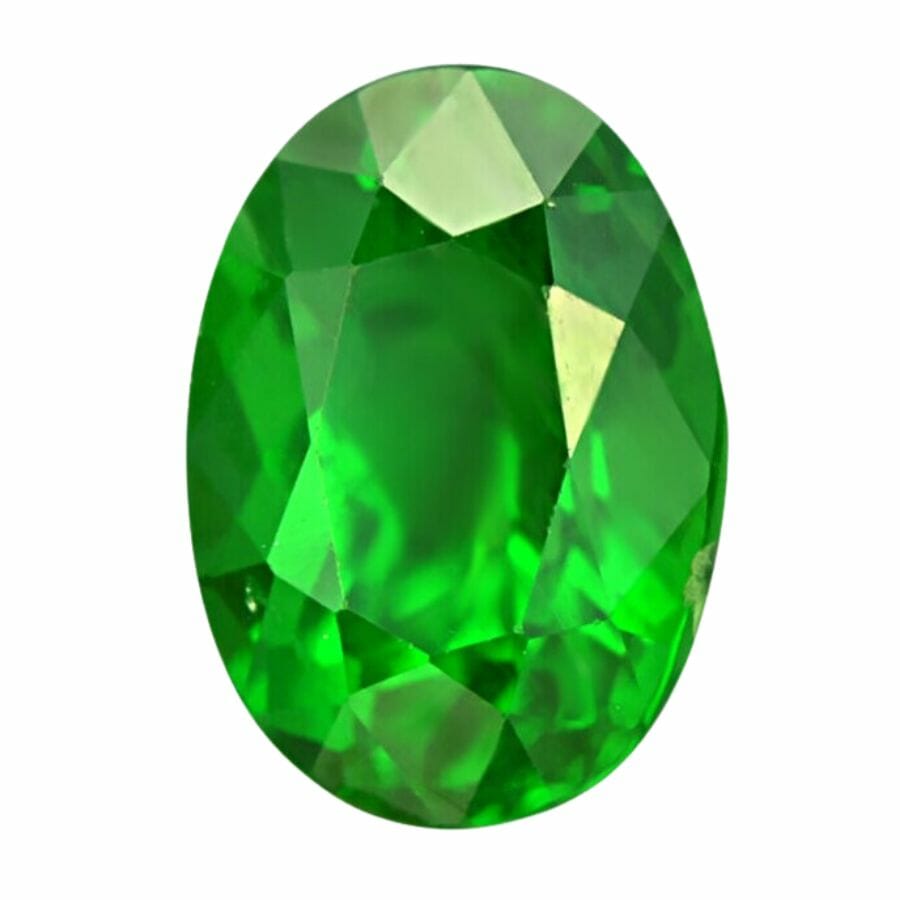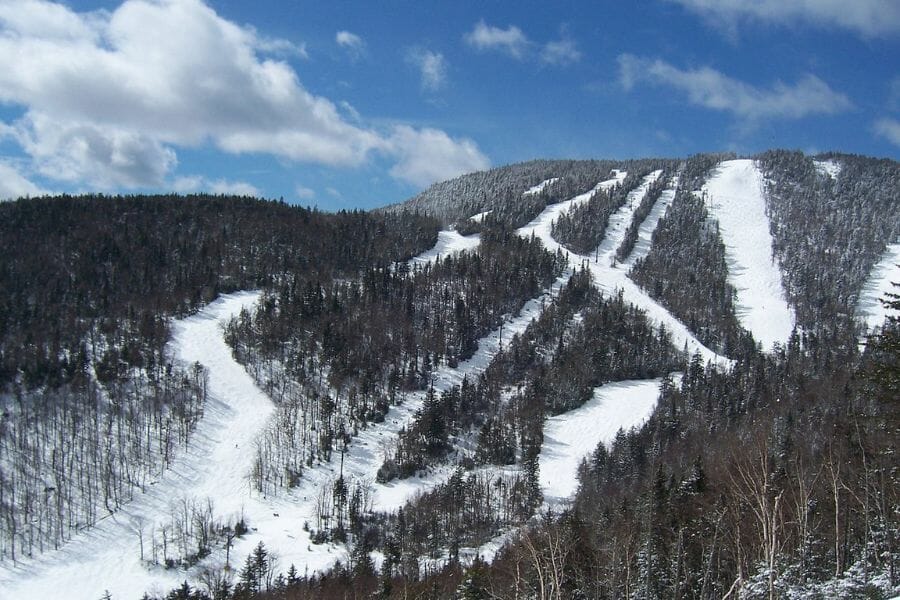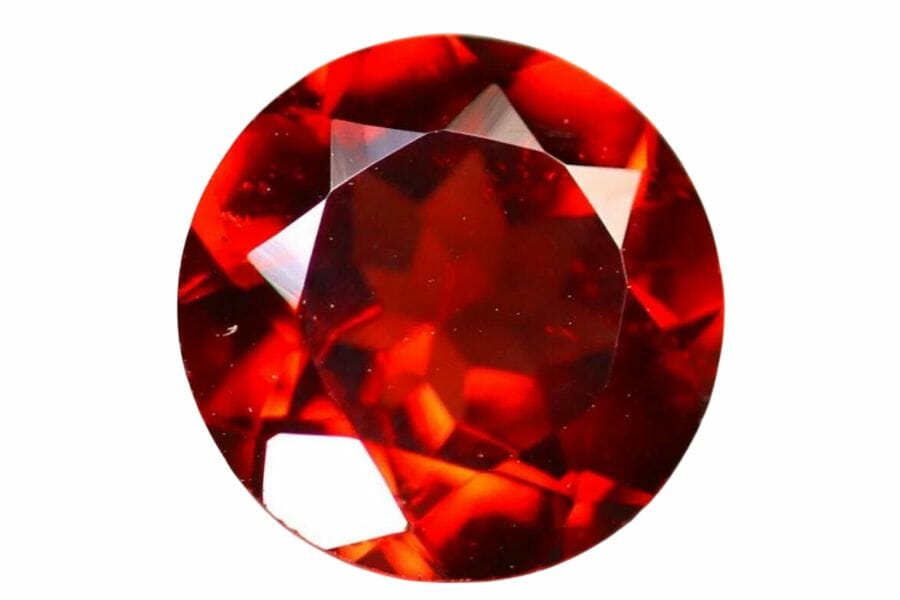Garnet is a fascinating gemstone with a rich history and diverse range of colors. This beautiful stone can be found in various parts of the United States, especially within mountainous regions and stream beds.
Knowing how to identify garnet is crucial for enthusiasts and collectors. We’ll explore the distinct characteristics of garnet, the general areas in the U.S. where it’s commonly discovered, and the best methods to locate this radiant gem.
Whether you’re a seasoned collector or a curious beginner, the world of garnet awaits with much to offer and discover.
What is garnet?
Garnet is a super cool mineral that can dazzle in shades of red, green, orange, and even purple.
Here’s a fun fact about how garnet is formed: deep inside the Earth, heat and pressure work together to create this sparkling gem! Over time, the Earth’s movements bring garnet closer to the surface for us to find.
If you’re hoping to discover some garnet in the United States, they’re in luck. Many mountains on the East Coast, the sunny deserts of the Southwest, and the rugged terrains of Alaska are all places where garnet likes to hang out.
The different types of garnet
There are more than 20 different types or “species” of garnet, but we’ll be looking at the six primary types. From deep reds to vibrant greens, each type has its own special story.
Almandine

Almandine is a standout in the garnet family with its deep red to purplish-red shades.
Compared to its garnet siblings, almandine is the most common type and loves to be the center of attention in metamorphic rocks, especially schist and gneiss.
While some garnets prefer specific places, almandine is a traveler and can be found all around the world.
Pyrope

Pyrope is known for its striking resemblance to the beloved ruby. This resemblance often leads to a fun case of mistaken identity!
What sets pyrope apart is its incredible transparency and the way it lights up with a fiery brilliance. It’s like holding a tiny sparkler!
While other garnets pop up in various places, pyrope has a special love for ultramafic rocks and certain metamorphic rocks.
Spessartine

Spessartine shines with a vibrant range of colors, from delightful orange to warm reddish-brown. The standout among them is the “mandarin” variety, flaunting a brilliant orange hue that can brighten up any day.
Unlike its garnet cousins that choose different homes, spessartine prefers the company of granite and certain metamorphic rocks.
Here’s a cool tidbit: its unique name is a nod to the Spessart Mountains in Germany, its first-known home.
Grossular

Grossular garnet shows off a wide array of colors, ranging from clear as a spring sky to lovely shades of green, pink, orange, and brown. Among these, the green tsavorite stands out as a gemstone superstar, prized for its vibrant hue.
This type of garnet seems to have a special bond with metamorphic rocks, especially skarns.
Andradite

Andradite has a palette of greens, yellows, and browns. The star of the show is the green version, known as demantoid garnets.
This little gem has a special trick up its sleeve – it sparkles with a brightness that can even outshine diamonds! That’s because of its amazing ability to split light in a way that creates a mesmerizing fire.
Andradite can often be found in rocks like skarns and serpentinites.
Uvarovite

Uvarovite proudly wears an emerald-green color, all thanks to the element chromium. But what really sets uvarovite apart is its size. These garnets are often tiny, making them even more special.
Many times, you’ll find uvarovite sparkling like a green sugar coat on rocks, a look known as druzy. This type of garnet loves to hang out in serpentine rocks.
Where to find garnet
From coast to coast, there are special spots in the US just waiting to be explored. Each location offers a unique adventure, filled with the chance to discover garnets.
Emerald Creek Garnet Area, Idaho

The Emerald Creek Garnet Area is a playground for gem enthusiasts. Operated by the U.S. Forest Service, this site has become a hotspot for garnet hunting.
It’s rich in star garnets, a rare and beautiful variety that showcases a radiant star pattern when polished. This pattern sets them apart from other gems and makes them truly special.
When you’re at Emerald Creek, you won’t just experience the thrill of finding a gem. You might also experience the joy of discovering a star garnet, a gem that’s not just rare in the U.S. but around the world.
Gore Mountain, New York

Located in the scenic Adirondack Mountains, Gore Mountain is famous for its massive garnets. In fact, the Gore Mountain Garnet outcrop holds the title for some of the world’s largest garnets!
The rock that cradles these impressive garnets is called garnet amphibolite, often nicknamed “black ore” or “dark ore” because of its rich, dark appearance.
This combination of large garnets and unique rocks makes Gore Mountain a must-visit spot for rock enthusiasts.
Garnet Hill, Nevada

Garnet Hill is like a treasure map come to life for rock enthusiasts. It’s one of the best places where you can find garnet just waiting to be discovered.
Nestled near Ely, this area is famous for its dark red almandine garnets that shine with a deep, rich color. These garnets are embedded in volcanic rock, making the hunt even more exciting.
As you search, you’ll get to see these gems in their natural setting, offering a real-life lesson in geology and the thrill of discovery.
Wah Wah Mountains, Utah

The Wah Wah Mountains are a rugged range known for their diverse minerals, especially garnets. If you’re keen on finding these sparkling stones, this area should be on your must-visit list.
Here, you can find a unique type called the red almandine garnet. This particular variety has a deep, mesmerizing hue that’s a favorite among collectors.
Little Pine Garnet Mine, North Carolina

For anyone wondering where to find garnet in real life, Little Pine Garnet Mine is a top recommendation. Located in the scenic mountains, this mine is famous for its rich deposits of various minerals, including garnets.
Visitors often find rhodolite garnets, known for their vibrant pinkish-red hues. It’s a place where hands can get a little dirty, but the reward is often a sparkling treasure.
How to find garnet
With the right techniques, you can uncover garnets that are waiting to be discovered. From tools to techniques, there are various methods to help you in your search.
Recognize host rocks
Garnets are usually found in certain types of rocks, mainly metamorphic ones. Some of their favorite hideouts include schist, gneiss, and amphibolite. By learning to recognize these rocks, anyone can boost their chances of spotting garnets.
Think of these rocks as garnet’s home; when you see them, there’s a good chance that they contain garnets.
So, the next time you’re out exploring, keep an eye out for schist, gneiss, and amphibolite. They might just lead you to some shiny garnet treasures!
Sift in stream beds and gravel
Thanks to erosion from nearby mountains or hills with garnet-rich rocks, these gems often make their way down and settle in stream beds and gravel.
If you’re keen to uncover these shiny treasures, here’s a tip: bring along a sieve! This handy tool is great for separating the larger garnet crystals from the finer sands and sediments.
Simply scoop up some of the stream bed or gravel material, pour it into your sieve, and give it a gentle shake. Once the smaller particles fall through, you’ll be left with the bigger bits, and with a bit of luck, some garnet crystals to show for your effort.
Test the hardness of possible garnets
When considering how to find garnet, one effective method is testing the hardness of a stone that might be garnet. Garnets are unique in their toughness, having a Mohs hardness of 6.5 to 7.5.
This makes them tougher than some materials but still softer than others. To put this into practice, try using a quartz crystal or a piece of unglazed porcelain. If the stone you suspect to be a garnet gets scratched by the quartz, it might be the real deal!
If your potential garnet can easily leave a mark on a steel blade or coin, that’s another good sign.
Use the right tools and equipment
If you come across a rock you think might be hiding some of these gems inside, a rock hammer and chisel will be your best friends. These tools let you gently break the rock open to reveal any hidden treasures.
But remember, safety first! Whenever you’re chipping or breaking rocks, always wear safety goggles. This helps shield your eyes from any tiny fragments that might fly out.
By taking precautions and using the appropriate equipment, you’ll make your garnet search both safe and successful.
A great video guide to finding garnets
This is a great overview of how to find garnets when you’re out in the field. The video is shot in Canada but you can use the same principles just about anywhere garnets are found.
How to identify garnet once you find it
Finding a potential garnet is just the first step in the adventure. The real fun begins when you try to confirm its identity. With so many stones looking alike, it’s essential to know the specific traits that make garnet unique.
What garnet looks like on the outside
Before diving into the inner characteristics of garnet, it’s essential to understand its external features. Let’s explore the distinctive look of the stone’s outer surface.
Color

While many folks picture garnets as dark red or brownish-red, that’s just the tip of the iceberg. Dive deeper, and you’ll discover garnets shimmering in vibrant shades of green, like uvarovite and tsavorite.
Move a bit further, and there’s the bright orange spessartine, lighting up the scene. And if you’re into softer hues, the pink to reddish tones of rhodolite are a treat for the eyes.
But that’s not all; some garnets even wear a mysterious shade of black.
Crystal shape

When discussing what garnet looks like on the outside, its shape is a standout feature. Raw garnet crystals have distinct forms that catch the eye. They commonly take on dodecahedral crystal shapes, which means they have 12 faces.
Alternatively, some might appear trapezohedral with 24 faces. But nature has its way of softening things up.
Over time, these crystals can have a rounded appearance, and their faces might lose some sharpness due to natural wear and tear.
These shapes give garnet its unique character, making them easily recognizable to those in the know!
Luster

When observing raw garnet crystals, one of the first things you might notice is their luster. The way these crystals catch and reflect light is truly captivating. They often exhibit a vitreous luster, which means they have a shine similar to that of glass.
In some instances, garnets can also have a resinous luster, giving them a warm, radiant glow. This combination of glassy shine and warm glow makes them stand out among other minerals.
What garnet looks like on the inside
While the outer appearance of garnet can be fascinating, its inner characteristics are equally intriguing. Peering inside reveals a world of colors, patterns, and inclusions unique to each stone.
Transparency

Garnets, with their diverse appearances, can vary in transparency. Many of these stones fall into the translucent to opaque category, meaning light can pass through them but not clearly, or not at all.
However, there are exceptions to this general trend. Some types of garnet, particularly those that are high in quality and desired for jewelry, boast a transparent nature.
This transparency allows them to shimmer brilliantly, letting light pass through without obstruction.
These clear, sparkling varieties are treasures among garnets, often catching the eye of gem enthusiasts and collectors alike.
Fracture

When you take a closer look at what garnet looks like on the inside, one of its notable features is its fracture. The term “fracture” in geology refers to how a mineral breaks when subjected to force.
Garnet has what’s called a conchoidal fracture. This means when it breaks, it can leave smooth, curved surfaces, kind of like when you see the inside of a broken shell.
These fractures give garnet a unique and interesting appearance, especially when viewed up close. Observing this feature can offer more insight into the properties and characteristics of this captivating gem.
Color zoning

Garnets can sometimes surprise you with their varied colors in just one crystal. This unique feature is known as color zoning.
When you take a closer look, you might notice areas of different shades or even completely different colors within the same stone.
This isn’t a flaw but a natural occurrence that adds to the stone’s character. Color zoning happens due to changes in the conditions during the garnet’s growth, like variations in temperature, pressure, or available elements.


